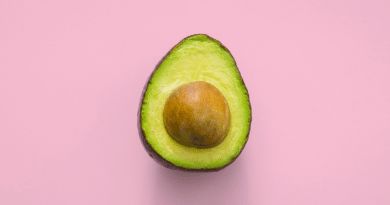The Allure of Exotic Fruits: Dragon Fruit, Kiwano, and Mangosteen
The world of fruits is a diverse and colourful one, offering a plethora of flavours and health benefits. While we are familiar with staples like apples, bananas, and oranges, there exists a captivating realm of exotic fruits that have been capturing the imaginations and taste buds of people worldwide.
These extraordinary fruits stand out not only for their striking appearances but also for their unique taste profiles and potential health advantages.
In this article, we embark on a journey of discovery, exploring three of the most alluring exotic fruits: Dragon Fruit, Kiwano, and Mangosteen. These fascinating fruits have garnered widespread attention for their appealing qualities, both culinary and nutritional.
Join us as we delve into the origins, cultivation, and distinct characteristics of each fruit.
From the vibrant hues of Dragon Fruit to the peculiar appearance of Kiwano and the regal allure of Mangosteen, we will uncover the secrets behind their captivating charm.
Moreover, we will delve into the nutritional powerhouses that these exotic fruits represent, examining the health benefits they offer and the potential positive impact they can have on our well-being.
So, fasten your seatbelts and prepare for an adventure into the world of these extraordinary fruits.
Whether you’re a seasoned foodie, a health enthusiast, or simply curious about the wonders of nature, the allure of Dragon Fruit, Kiwano, and Mangosteen is sure to captivate your senses and leave you craving more. Let’s embark on this exciting journey together!
Dragon Fruit
Dragon Fruit, also known as Pitaya, is a mesmerizing tropical fruit that has been captivating taste buds for centuries.
Native to Central and South America, this exotic fruit is now cultivated in various regions worldwide, including Southeast Asia and parts of Australia.
Origin and Cultivation of Dragon Fruit
Dragon Fruit traces its roots back to countries like Mexico, Colombia, and Nicaragua, where it thrives in warm and humid climates.
The fruit grows on a unique cactus species called Hylocereus, which has sprawling vines that need support to climb and bear fruit. Cultivation has expanded to other regions due to the increasing global demand and the fruit’s adaptability to different environments.
The Striking Appearance and Varieties
One of the most captivating aspects of Dragon Fruit is its stunning appearance. The fruit typically has a vibrant pink or red skin, covered in green scales that resemble a mythical dragon’s scales, hence its name.
There are also varieties with yellow or white skin.
When sliced open, the fruit reveals a contrasting white or pink flesh studded with small black seeds, adding to its visual appeal.
Different regions have cultivated various Dragon Fruit varieties, each with slight differences in taste, sweetness, and overall appearance, making it an intriguing subject for fruit enthusiasts and horticulturists alike.
Nutritional Profile and Health Benefits
Beyond its visually striking appearance, Dragon Fruit is packed with essential nutrients and health benefits.
The fruit is an excellent source of vitamin C, providing a substantial boost to the immune system. It is also rich in antioxidants, which combat free radicals and promote cellular health.
Moreover, Dragon Fruit contains several essential minerals like iron, calcium, and magnesium, contributing to bone strength and overall well-being. Its low calorie and high fiber content make it a valuable addition to weight management diets.
Culinary Uses and Popular Dishes
In the culinary world, Dragon Fruit is versatile and lends itself well to various dishes. Its mildly sweet and refreshing taste pairs beautifully with both sweet and savoury preparations. It is often enjoyed fresh as a standalone fruit or added to fruit salads, smoothies, and desserts like sorbets and puddings.
In some regions, Dragon Fruit is also used in savoury dishes, such as salads, salsas, and even as a garnish for seafood. Its vibrant colour adds a visually appealing touch to any plate.
Sustainability and Environmental Impact
As the demand for Dragon Fruit continues to rise globally, sustainable cultivation practices are crucial to ensure the fruit’s long-term availability. Sustainable farming techniques, such as water-efficient irrigation and natural pest control, can minimize environmental impact.
Furthermore, promoting biodiversity in agricultural practices can help preserve the natural habitats of the cacti on which Dragon Fruit thrives, benefiting local ecosystems and wildlife.
Dragon Fruit’s allure extends beyond its looks, offering a delightful taste and a treasure trove of health benefits. As we continue to explore the world of exotic fruits, let’s savour the wonder of Dragon Fruit and appreciate the effort it takes to bring this mesmerizing fruit from farm to table.
Kiwano
Kiwano, also known as Horned Melon or African Horned Cucumber, is an enigmatic and fascinating fruit that hails from the semi-arid regions of Africa, particularly the Kalahari Desert.
This exotic fruit has been cherished by indigenous cultures for centuries, and its unique appearance and impressive nutritional profile have piqued the curiosity of fruit enthusiasts around the world.
Unravelling the Mysteries of Kiwano
Kiwano’s origins can be traced back to the southern regions of Africa, where it has been a part of traditional diets and cultural practices for generations.
Its recent popularity in international markets has led to increased interest in understanding the fruit’s history and significance to the communities that have cherished it for so long.
The Peculiar Appearance and Texture
Kiwano’s appearance is what sets it apart from other fruits. Resembling a small, oval-shaped melon with vivid orange skin, the fruit is covered in spiky, horn-like projections, giving it a distinct and striking look.
When ripe, the skin turns a bright yellow, indicating its readiness for consumption.
The texture of Kiwano is a unique sensory experience. Slicing open the fruit reveals a lime-green, jelly-like pulp studded with edible seeds.
The taste is a delightful combination of tangy and subtly sweet, making it a refreshing treat on a hot day.
Rich Source of Nutrients and Potential Health Advantages
Kiwano is more than just an intriguing fruit; it is a nutritional powerhouse. It boasts an array of essential vitamins, including vitamin C, vitamin A, and vitamin E, which contribute to skin health, immune function, and antioxidant protection.
Additionally, Kiwano is rich in minerals like potassium and magnesium, aiding in heart health and muscle function.
The fruit’s high water content also makes it hydrating and beneficial for maintaining overall well-being.
Some studies suggest that the presence of antioxidants in Kiwano may have potential health advantages, but further research is needed to fully understand its specific benefits.
Culinary Applications and Exotic Recipes
Kiwano’s unique taste and texture make it a versatile ingredient in the culinary world. It is often enjoyed fresh, either on its own or added to fruit salads and smoothies, providing a delightful burst of flavour and texture.
Moreover, Kiwano can be used as an exotic garnish for desserts, cocktails, and savoury dishes. Its striking appearance and vibrant colour elevate the visual appeal of various culinary creations.
Sustainable Farming Practices and Conservation Efforts
As Kiwano gains popularity in global markets, ensuring sustainable farming practices becomes imperative. Cultivating Kiwano requires less water compared to many traditional crops, making it suitable for arid regions.
Emphasizing organic farming methods and responsible water management can contribute to reducing the environmental impact of Kiwano production.
Preserving the natural habitat of Kiwano plants is essential for maintaining biodiversity and protecting the ecosystems where this remarkable fruit thrives.
Collaborative efforts between conservationists and local communities can help ensure the sustainable future of Kiwano and its positive impact on both the environment and the people who depend on it.
Intriguing and nutritious, Kiwano invites us to explore the wonders of exotic fruits and appreciate the cultural significance they hold.
As we savour the captivating taste of Kiwano, let us also embrace the responsibility of preserving these unique treasures for generations to come.
Mangosteen
Mangosteen, revered as the “Queen of Fruits,” is a majestic tropical fruit that hails from the lush rainforests of Southeast Asia.
With its regal appearance, exquisite taste, and a long history of traditional medicinal uses, Mangosteen has rightfully earned its place as one of the most captivating and sought-after exotic fruits.
The Queen of Fruits – Mangosteen’s History and Cultivation
Mangosteen has a rich historical significance in the regions of Southeast Asia, particularly in countries like Thailand, Indonesia, and Malaysia, where it is believed to have originated.
For centuries, the fruit has been celebrated for its enchanting taste and revered as a symbol of good fortune and prosperity.
Cultivating Mangosteen can be a labour-intensive process, as the trees require specific tropical climates and well-drained soil to thrive. The fruiting season is relatively short, adding to its exclusivity and allure.
Exquisite Taste and Aroma
One of the most alluring qualities of Mangosteen is its exceptional taste and aroma. The thick, dark-purple rind conceals segments of tender, white, and juicy flesh. Upon biting into the fruit, one is met with a symphony of flavours – a delicate balance of sweet and tangy notes, with hints of peach, citrus, and strawberry.
The tantalizing aroma adds to the overall sensory experience, making Mangosteen a true delicacy.
Medicinal Properties and Traditional Uses
Mangosteen holds a special place in traditional medicine, where various parts of the fruit and tree are believed to have healing properties.
The fruit is renowned for its high content of powerful antioxidants, including xanthones, which have been linked to potential anti-inflammatory and antimicrobial effects.
In traditional practices, Mangosteen has been used to treat various ailments, including digestive issues, skin conditions, and infections. While modern research is ongoing, the fruit’s medicinal reputation continues to pique the interest of health enthusiasts and researchers alike.
Culinary Utilization and Refreshing Beverages
Beyond its esteemed status in traditional medicine, Mangosteen is a prized ingredient in the culinary world.
The luscious flesh is often enjoyed fresh, either on its own or added to fruit salads and desserts, providing a burst of tropical flavours.
Mangosteen is also used in a variety of refreshing beverages, such as juices, smoothies, and teas.
Its natural sweetness and aromatic essence lend themselves well to these thirst-quenching concoctions, making it a popular choice in tropical regions.
Challenges in Cultivation and Efforts for Preservation
Despite Mangosteen’s global popularity, its cultivation faces significant challenges. The fruit is highly perishable and delicate, making transportation and export a logistical challenge.
Additionally, it is susceptible to various pests and diseases, requiring careful attention from farmers.
Preserving Mangosteen’s unique genetic diversity and natural habitats is crucial for the fruit’s long-term survival. Conservation efforts, such as promoting sustainable agricultural practices and protecting the rainforests where the trees grow, play a vital role in safeguarding this regal fruit and its ecosystem.
As we savour the splendour of Mangosteen, let us also reflect on the delicate balance between enjoying its delectable taste and ensuring its preservation for future generations.
The allure of the “Queen of Fruits” is a reminder of the rich biodiversity that nature offers, and the responsibility we bear in cherishing and safeguarding these precious gifts of the earth.
Exotic Fruits in Global Markets
Exotic fruits have witnessed a remarkable surge in demand in the global markets in recent years. As consumers seek unique flavours, diverse culinary experiences, and health benefits, fruits like Dragon Fruit, Kiwano, and Mangosteen have risen to prominence, transcending their traditional boundaries and captivating taste buds worldwide.
Increasing Demand for Exotic Fruits
The growing interest in healthy and adventurous eating habits has fuelled the rising demand for exotic fruits.
Consumers are increasingly drawn to the vibrant colours, exotic tastes, and nutritional value offered by fruits that were once considered rare and unfamiliar.
The allure of exploring new flavours and incorporating diverse ingredients into modern diets has made exotic fruits a sought-after commodity in supermarkets and specialty stores globally.
Export and Import Trends of Dragon Fruit, Kiwano, and Mangosteen
As the demand for exotic fruits increases, the international trade of Dragon Fruit, Kiwano, and Mangosteen has expanded significantly.
Countries with favourable climates for cultivation, such as Vietnam, Thailand, and the Philippines, have emerged as major exporters of Dragon Fruit and Mangosteen.
Meanwhile, Kiwano finds its way from African nations like Kenya and South Africa to markets worldwide.
In importing regions like the United States, Europe, and Australia, exotic fruits have become a regular sight in grocery stores, often sourced from various producing countries.
Advances in transportation and refrigeration technologies have facilitated the seamless movement of these delicate fruits across continents, ensuring that consumers can enjoy them year-round.
Economic Significance for Producing Countries
The cultivation and export of exotic fruits have proven to be economically significant for the producing countries.
These fruits represent valuable agricultural exports, generating income for local farmers and contributing to the overall economic growth of the nations involved.
For many communities in Southeast Asia and Africa, the cultivation of Dragon Fruit, Kiwano, and Mangosteen provides vital livelihood opportunities and income diversification.
Moreover, the success of these fruits in the global market has bolstered tourism in producing regions.
As travellers seek to experience the authenticity of the countries known for these exotic fruits, agritourism has gained traction, benefiting local economies and promoting cultural exchange.
The Role of International Trade in Promoting Sustainable Practices
The international trade of exotic fruits has also played a crucial role in promoting sustainable practices in producing countries.
As consumer awareness grows concerning environmental and social impacts, the demand for ethically sourced and sustainably grown products has increased.
In response, many fruit producers have adopted sustainable farming practices, such as organic cultivation, reduced pesticide usage, and water-efficient irrigation methods.
Additionally, efforts to preserve natural habitats and biodiversity have gained momentum, as these aspects contribute to the long-term viability of fruit cultivation and protect the ecosystems in which these fruits thrive.
International trade acts as a catalyst for positive change, encouraging producers to adhere to ethical and environmentally friendly practices to meet global market demands.
This, in turn, supports a responsible and sustainable supply chain for exotic fruits, benefitting not only the environment but also the livelihoods of those involved in their cultivation.
In conclusion, the allure of exotic fruits has transcended borders, with Dragon Fruit, Kiwano, and Mangosteen captivating consumers worldwide.
As the global demand for these unique fruits continues to grow, responsible international trade practices play a vital role in supporting the economic well-being of producing countries and promoting sustainable farming methods.
The journey of these exotic fruits from farm to table reflects the interconnectedness of our global food system and the opportunities it presents for positive change and appreciation of diverse culinary treasures.
Experiencing Exotic Fruits: Tips and Cautions
Experiencing the delightful taste and allure of exotic fruits like Dragon Fruit, Kiwano, and Mangosteen is becoming increasingly accessible in many parts of the world.
While they might not be available in every local grocery store, you can often find them in specialty markets, international food stores, and some larger supermarkets with diverse produce sections.
Additionally, online retailers and fruit delivery services may offer a convenient way to purchase exotic fruits and have them shipped directly to your doorstep, regardless of your location.
Selecting Ripe and High-Quality Fruits
When seeking the best experience with these exotic fruits, it’s essential to choose ripe and high-quality specimens. Here are some tips for selecting the best fruits:
Dragon Fruit: Look for Dragon Fruits with vibrant skin colour, free from bruises or blemishes. The fruit should yield slightly when gently pressed, indicating ripeness.
However, avoid those with overly soft or mushy flesh.
Kiwano: Opt for Kiwanos with bright orange or yellow skin, depending on the variety. The fruit should feel heavy for its size and have firm, unwrinkled skin.
Avoid any with visible mould or signs of decay.
Mangosteen: Choose Mangosteens with a firm, glossy, and deep-purple rind. Avoid fruits with brown spots or mould. The best Mangosteens will have a fresh green stem cap, indicating recent harvesting.
Safe Handling and Consumption Guidelines
Exotic fruits, like any fresh produce, require proper handling and preparation to ensure food safety. Follow these guidelines:
- Wash Thoroughly: Rinse the fruits under cool running water and gently scrub their surfaces with a soft brush to remove any dirt or residues.
- Peeling and Cutting: To consume Dragon Fruit and Mangosteen, simply slice them in half and scoop out the flesh. For Kiwano, cut the fruit lengthwise and scoop out the gelatinous pulp with a spoon.
- Storage: Exotic fruits are best enjoyed fresh, but if you have leftovers, store them in the refrigerator. Mangosteens are particularly sensitive and can only last a few days once opened.
Allergies and Potential Side Effects to Consider
While exotic fruits are generally safe for most people, some individuals may have allergies or sensitivities to certain fruits. Be mindful of the following:
Latex Allergy: Dragon Fruit and Kiwano are members of the cactus family, which may cause cross-reactivity in individuals with latex allergies. If you are latex-sensitive, consult a healthcare professional before trying these fruits.
Allergic Reactions: As with any new food, start with a small portion to check for any adverse reactions. Allergies to fruits are rare but can occur, so pay attention to any symptoms like itching, swelling, or difficulty breathing.
Gastrointestinal Sensitivity: Consuming large amounts of exotic fruits may cause gastrointestinal discomfort in some individuals due to their fibre content.
Moderation is key, especially if you are trying these fruits for the first time.
By following these tips and being cautious about allergies and sensitivities, you can safely enjoy the allure of exotic fruits and experience the delectable flavours they have to offer.
Whether you’re adding them to your favourite recipes or enjoying them fresh, these exotic fruits are sure to provide a delightful and unique culinary experience.
Embracing the Allure of Exotic Fruits
Exotic fruits like Dragon Fruit, Kiwano, and Mangosteen offer a world of flavours and experiences, enticing us to embrace their allure and embark on a journey of culinary exploration.
As we venture into the realm of these fascinating fruits, we discover not only delectable tastes but also numerous environmental and societal benefits that come with their cultivation and consumption.
Diverse Culinary Experiences and Adventurous Palates
Embracing exotic fruits introduces us to a world of diverse culinary experiences and caters to adventurous palates. As we savour the unique flavours, textures, and aromas of Dragon Fruit, Kiwano, and Mangosteen, we cultivate a deeper appreciation for the rich tapestry of nature’s bounty.
Exploring and incorporating these fruits into our diets open the doors to a wide array of delightful dishes, adding a burst of colour and distinctiveness to our meals.
Moreover, experimenting with these exotic fruits encourages creativity in the kitchen and fosters a deeper connection to different cultures, as these fruits often hold special significance in traditional cuisines.
Sharing these delightful experiences with friends and family can be a wonderful way to celebrate diversity and the joy of discovering new tastes together.
Environmental Benefits of Cultivating and Consuming Exotic Fruits
The cultivation and consumption of exotic fruits bring forth several environmental benefits. For example:
Crop Diversity: Incorporating a variety of crops like Dragon Fruit, Kiwano, and Mangosteen into agricultural practices promotes crop diversity. This diversification helps reduce the risks associated with monoculture farming, such as pest infestations and soil depletion.
Resource Efficiency: Some exotic fruits, like Kiwano, thrive in arid regions, requiring less water for cultivation compared to conventional crops. By utilizing water-efficient practices, we can support sustainable agriculture and minimize water wastage.
Habitat Preservation: Encouraging the cultivation of exotic fruits can incentivize the preservation of natural habitats and promote biodiversity. Cultivating these fruits in a sustainable manner can contribute to conserving the unique ecosystems in which they thrive.
Promoting Biodiversity and Sustainable Agriculture
By embracing exotic fruits and supporting their cultivation, we contribute to promoting biodiversity and sustainable agricultural practices.
Biodiversity is vital for the health of our planet, as it ensures ecological resilience, enhances ecosystem services, and safeguards against crop diseases and pests.
Sustainable agricultural practices, such as organic farming, integrated pest management, and responsible water usage, can be encouraged through consumer demand for ethically and environmentally friendly produce.
Supporting sustainable agriculture not only benefits the environment but also fosters fair and ethical treatment of farmers and workers involved in the fruit supply chain.
The Future of Exotic Fruits in a Changing World
In a rapidly changing world with evolving food preferences and environmental challenges, the allure of exotic fruits stands strong.
As people become more conscious of the environmental impact of their food choices, exotic fruits offer a sustainable and enticing option.
The future of these extraordinary fruits lies in the hands of consumers, producers, and policymakers. By embracing and advocating for the responsible cultivation and consumption of exotic fruits, we can foster a more resilient and diverse food system.
Additionally, research and investments in sustainable farming practices can unlock the full potential of these fruits, ensuring their continued availability and accessibility in the global market.
In conclusion, embracing the allure of exotic fruits like Dragon Fruit, Kiwano, and Mangosteen goes beyond indulging our taste buds; it is an invitation to celebrate diversity, promote sustainability, and connect with nature’s abundant offerings.
As we savour the delightful tastes and benefits of these fruits, let us do so with a mindful appreciation of the positive impact we can create by supporting responsible agricultural practices and cherishing the treasures of the earth for generations to come.
Conclusion
In the captivating world of exotic fruits, Dragon Fruit, Kiwano, and Mangosteen stand as true marvels, enchanting us with their unique appearances, delightful flavours, and potential health benefits.
As we conclude our journey of exploration into these extraordinary fruits, we are left with a deeper appreciation for the wonders of nature and the diverse culinary experiences they offer.
The Enchantment of Dragon Fruit, Kiwano, and Mangosteen
Dragon Fruit’s striking beauty, Kiwano’s peculiar appearance, and Mangosteen’s exquisite taste and aroma have made them the stars of the exotic fruit realm.
Each fruit tells a story of its origin, cultural significance, and the communities that have cherished it for generations. Their allure extends beyond mere taste, sparking a sense of wonder and curiosity that enriches our culinary journeys.
Encouraging Exploration and Appreciation of Exotic Fruits
As we continue to explore the world of exotic fruits, we encourage others to join in this culinary adventure.
By embracing and appreciating the diverse flavours and traditions these fruits bring, we foster a greater understanding and respect for the cultural heritage of the regions where they originate.
Moreover, by incorporating Dragon Fruit, Kiwano, and Mangosteen into our diets, we support sustainable practices, promoting the conservation of natural habitats and biodiversity.
Our curiosity and willingness to explore new culinary horizons can also serve as a bridge, connecting different cultures and fostering a sense of unity in our diverse world.
Embracing Responsible Practices for a Healthier Planet
The allure of exotic fruits not only tantalizes our taste buds but also beckons us to embrace responsible practices for a healthier planet.
By choosing sustainably grown produce and supporting ethical supply chains, we play a vital role in mitigating environmental impacts and safeguarding the ecosystems that nurture these precious fruits.
As we indulge in the bounty of nature, let us be mindful of our role as custodians of the earth. Embracing sustainable agriculture, reducing food waste, and supporting fair trade practices can lead to a more resilient and equitable food system.
In conclusion, Dragon Fruit, Kiwano, and Mangosteen symbolize the beauty and abundance of the natural world. By savouring their allure and promoting responsible practices, we partake in a delightful journey that nourishes our bodies, celebrates diversity, and fosters a profound connection with the planet we call home.
As we embark on future culinary explorations, let our appreciation for exotic fruits be a testament to our commitment to cherishing and preserving the treasures of the earth for generations to come.




